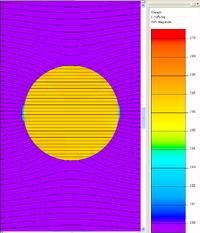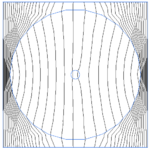toyonline
Member level 2
Hi, I am designing a RF electric field inside a glass tube. I have some questions not quite sure.
The glass tube is of 200mm long and 10mm diameter. The RF electric field is perpendicular to the glass tube, and is applied through a parallel of metal plates. I would like to use electric field inside the glass tube for special application purpose. The RF is 300Vpp @ 1MHz.
My questions are:
1) whether the glass tube will induce some kind of shielding to the applied alternating electric field inside the tube? any measurable changes inside the electric field?
2) the field direction between two parallel plates should be parallel (in other words, field strength should be all the same). What would happen to the electric field direction inside that glass tube?
To my knowledge, glass is a good insulator so that it will not impose any shielding inside, under external electric field. But I am not sure whether this is true in practical aspect?
Thank you.
--Toyonline
The glass tube is of 200mm long and 10mm diameter. The RF electric field is perpendicular to the glass tube, and is applied through a parallel of metal plates. I would like to use electric field inside the glass tube for special application purpose. The RF is 300Vpp @ 1MHz.
My questions are:
1) whether the glass tube will induce some kind of shielding to the applied alternating electric field inside the tube? any measurable changes inside the electric field?
2) the field direction between two parallel plates should be parallel (in other words, field strength should be all the same). What would happen to the electric field direction inside that glass tube?
To my knowledge, glass is a good insulator so that it will not impose any shielding inside, under external electric field. But I am not sure whether this is true in practical aspect?
Thank you.
--Toyonline


